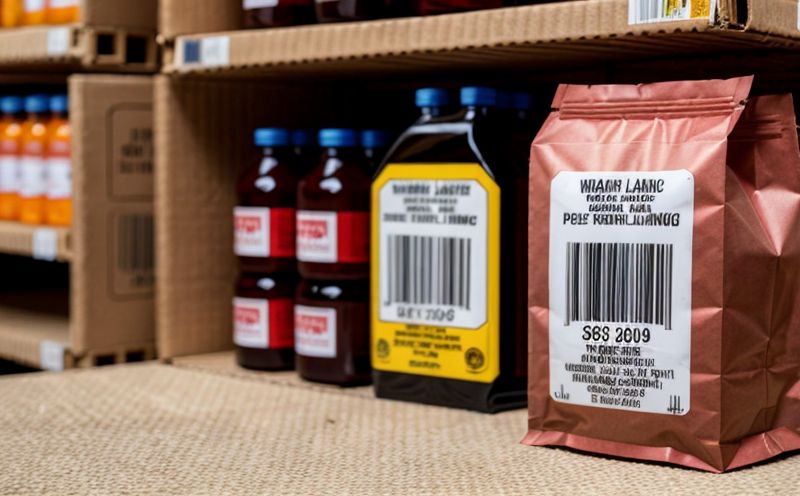CPSIA Toy Packaging and Label Safety Assessment
The Consumer Product Safety Improvement Act (CPSIA) is a United States federal law that sets safety standards for children’s products. This legislation was enacted to protect the health and safety of American consumers, especially children, by addressing hazardous materials in toys and other consumer goods. One critical aspect of CPSIA compliance involves ensuring that toy packaging and labels are safe from harmful substances.
The CPSIA requires toy manufacturers to comply with specific testing requirements for lead content in toy products, including their packaging and labeling. The law mandates that no part of a toy or its packaging should contain more than 100 ppm (parts per million) of lead, which is significantly lower than the previous standard of 300 ppm. This stringent limit applies to both hard and soft toys.
Additionally, CPSIA stipulates that any warning labels on toy packages must be clear and conspicuous, providing consumers with accurate information about potential hazards associated with the product. These warnings should be in a language understood by the target audience and easily visible during typical use or storage of the product.
The CPSIA Toy Packaging and Label Safety Assessment is crucial for ensuring compliance with these regulations. This assessment involves several key steps:
- Testing for lead content using methods such as atomic absorption spectroscopy (AAS) or inductively coupled plasma mass spectrometry (ICP-MS).
- Evaluating the clarity and visibility of warning labels to ensure they meet regulatory requirements.
- Reviewing the overall design and composition of packaging materials to identify any potential risks.
The CPSIA Toy Packaging and Label Safety Assessment is essential for toy manufacturers who wish to avoid costly recalls or legal action. By conducting this assessment, companies can demonstrate their commitment to safety and compliance with federal regulations. This proactive approach not only protects the brand's reputation but also ensures that products meet the highest standards of quality and safety.
Understanding the CPSIA’s requirements is critical for toy manufacturers who aim to enter or maintain a presence in the U.S. market. Non-compliance can result in significant financial penalties, product seizures, and damage to brand reputation. By adhering to these regulations through comprehensive testing and assessment, companies can ensure that their products are safe and compliant.
The CPSIA Toy Packaging and Label Safety Assessment is part of a broader quality management strategy that focuses on reducing risks associated with hazardous materials in toys. This includes not only packaging but also the toys themselves. By focusing on these aspects, manufacturers can enhance product safety while maintaining brand integrity.
Why Choose This Test
- Compliance with CPSIA: Ensure that your toy packaging complies with the stringent lead content limits set by the CPSIA.
- Avoid recalls and fines: By adhering to these regulations, you can prevent costly product seizures and legal issues.
- Enhance brand reputation: Demonstrating compliance with federal laws helps build trust with consumers and strengthens your brand’s market position.
- Protect children: The CPSIA Toy Packaging and Label Safety Assessment ensures that toy packaging is safe from hazardous materials, protecting the health and well-being of children.
The CPSIA Toy Packaging and Label Safety Assessment offers a comprehensive approach to ensuring compliance with federal regulations. This assessment not only protects your products but also enhances your brand’s reputation by demonstrating a commitment to safety and quality.
Quality and Reliability Assurance
Ensuring the highest standards of quality and reliability is crucial for toy manufacturers. The CPSIA Toy Packaging and Label Safety Assessment plays a vital role in this process by providing accurate and reliable data on lead content and label clarity. This assessment helps manufacturers identify potential risks early, allowing them to address issues before they become significant problems.
By conducting regular assessments, companies can maintain consistent quality across all products. This consistency is essential for maintaining consumer trust and ensuring that toys meet the CPSIA’s strict standards. The use of advanced testing methods such as AAS and ICP-MS ensures accurate results, providing manufacturers with confidence in their product safety.
The CPSIA Toy Packaging and Label Safety Assessment also supports a culture of continuous improvement within manufacturing organizations. By regularly assessing packaging and labels, companies can identify areas for improvement and implement changes that enhance safety and compliance. This proactive approach not only protects the brand but also demonstrates a commitment to excellence in quality management.
Competitive Advantage and Market Impact
The CPSIA Toy Packaging and Label Safety Assessment provides toy manufacturers with a competitive edge by ensuring compliance with federal regulations and enhancing product safety. In today’s highly regulated market, meeting these requirements is not only essential but also a significant differentiator.
By adhering to the CPSIA’s stringent lead content limits and clear labeling requirements, manufacturers can position their products as safe and reliable options for consumers. This commitment to quality and compliance helps build trust with customers, which is crucial in maintaining market share and attracting new customers.
The CPSIA Toy Packaging and Label Safety Assessment also supports sustainable business practices by reducing the risk of recalls and legal action. These risks can have a significant financial impact on manufacturers, making it essential to ensure ongoing compliance. By preventing costly issues, companies can focus their resources on innovation and growth rather than crisis management.
In conclusion, the CPSIA Toy Packaging and Label Safety Assessment is not just a regulatory requirement but also an opportunity for toy manufacturers to enhance product safety, protect brand reputation, and gain a competitive advantage in the market. By adhering to these regulations, companies can ensure that their products meet the highest standards of quality and reliability.





